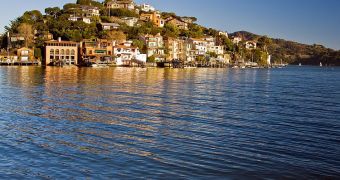The United States have more coastline that any other nation on Earth, and the country is exposed to the Pacific and Atlantic Oceans, in addition to the Gulf of Mexico and the Caribbean Sea. Residents in these areas should not take the threat of tsunamis lightly, authorities warn.
Experts with the US National Oceanic and Atmospheric Administration (NOAA) explain that there is always the potential of large waves hitting any of these areas, regardless if people are used to the idea or not.
Geological evidence uncovered over the past few years have already demonstrated that locations such as New York City have been swept by massive tsunamis in ancient times, when a set of conditions conspired to create the event.
In light of what happened in Japan on March 11, NOAA is again bringing this issue up with Americans who live or vacation in these tsunami-prone areas. The warning is especially intense for the West Coast, which is located atop an active fault line that can produce large tremors.
The US tsunami detection and warning system is operated by the NOAA National Weather Service (NWS). Experts here say that people need to be informed about the risk they are subjecting themselves to at all times, and that they need to be prepared to move to higher ground when needed.
“As we offer our assistance to those impacted by this tragedy, we also renew our commitment to ensuring preparedness along our shores,” said President Barack Obama in a White House message.
“Efficient warning systems and awareness in coastal communities are vital to protecting Americans in at-risk areas of the country,” Obama explained earlier this week.
American tsunami detection and warning capabilities were expanded following the 2004 Indian Ocean tsunami, which claimed the lives of more than 230,000 people, after a magnitude 9.1 tremor struck.
At the time, Congress gave more than $150 million to NOAA for improving US preparedness in the face of possible natural disasters. Those money were put to good use, as 83 communities along national coastlines are now declared ready to face a tsunami.
“On March 23, the National Weather Service and many states, including the US Commonwealth of Puerto Rico and the US Virgin Islands will test and practice tsunami response plans. This will be the first Caribbean-wide tsunami exercises,” NOAA reports.
“These exercises – ranging from table top exercises to full-scale drills and beach-front evacuations – provide an opportunity for coastal emergency management organizations to test and update emergency response plans for tsunamis,” the agency adds.

 14 DAY TRIAL //
14 DAY TRIAL //